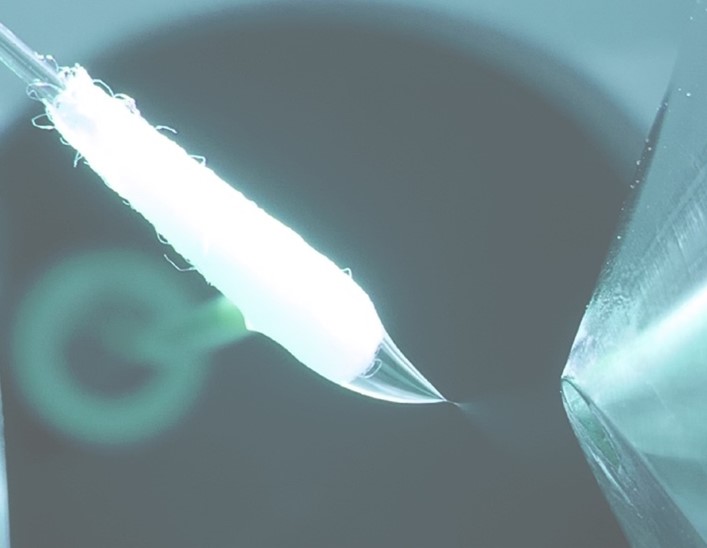Rapid Pesticide Screening by Swab Spray Mass Spectrometry
Ambient ionizations techniques have gained increased interest for rapid qualitative analysis of compounds in the various fields of life sciences and forensics. Analytes are ionized from solutions or surfaces under ambient conditions without any need for sample preparation. Swab spray mass spectrometry is an electrospray-based ambient ionization method that features easy and effective sample collection on surfaces and direct ion generation by application of high voltage and solvent flow to the swab head [1]. Its capabilities have been demonstrated in numerous applications [2].

Figure1. Formation of a Taylor cone on the swab head is visible after application of solvent flow and high voltage.
In agriculture a large variety of pesticides are used in vast quantities. The established LC-MS/MS based methods for monitoring pesticide residues on food products require time-consuming sample preparation steps. Ambient ionization methods offer the opportunity for a rapid and hassle-free workflow providing qualitative information about pesticide contamination on food products.
A custom-made swab spray ionization source attached to an Orbitrap Velos mass spectrometer was employed for rapid pesticide screening. The ionization potential is directly applied on the conductive swab handle and the solvent is delivered to the rayon swab head through a capillary. Application of the high voltage induces the formation of a Taylor cone and a jet region which breaks up into the spray plume, where the ionization process takes place. The effect of source parameters and solvents is evaluated with regard to background signals and sensitivity. This setup enables fast detection of pesticides sampled from fruits and vegetables, and their structural confirmation by collision activated dissociation. Additionally, aspects of quantitation are discussed, including the influence of sample surface area and texture on analyte collection, analyte extraction from swab, suppression effects, sensitivity, and reproducibility of the method.
[2] V. Pirro, A. K. Jarmusch, M. Vincenti, R. G. Cooks, Anal Chim Acta 2015, 861, 47.